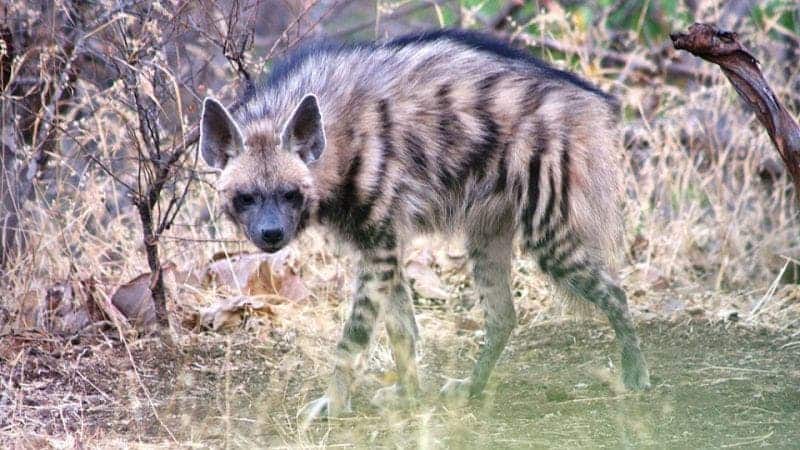An extremely unusual behavior has been reported by Indian researchers in the Middle East: a pack of wolves has been spotted hunting with a hyena, something that has never been reported before.

Peace in the Middle East
Typically, different species of predators don’t really get along. Most of the time, they compete for prey. Sometimes, they fight for it, and sometimes, they even kill each other. But somehow, a group of animals made it work.
Wolves are social creatures, but they almost never accept outside species into their packs — even dogs, with whom they share a lot of similarities, are usually chased away or hunted more often than they are accepted. While spotted hyenas are also social creatures, striped hyenas are often solitary. So when researchers found hyena tracks mixed with gray wolf tracks, they knew something strange was up.
“Animal behavior is often more flexible than described in textbooks,” said Vladimir Dinets, an associate professor of psychology at the University of Tennessee in Knoxville. “When necessary, animals can abandon their usual strategies and learn something completely new and unexpected. It’s a very useful skill for people, too.”
They followed the tracks several times, including a clear layer of moist sand imprinted with hyena and wolf tracks. Initially, they thought the hyena came after the wolves (or the other way around), but this was shown not to be the case. In some places, the prints of one of the three wolves were on top of the prints of the hyena. In other places, the hyena print was on top of a wolf print.
Finally, after four years, they managed to spot the wolves with the hyena. Beniamin Eligulashvili, a zoologist in Israel, witnessed the pack, recalling that the hyena traveled with the wolves, as a member of the pack.
“The hyena was not following the wolves, but moving in the middle of the pack,” said the study, which both men authored.
This likely benefits both groups. The Negev Desert is one of the harshest environments in the range of either of these animals, and both species need all the help they can get. Wolves are better hunters (especially in a pack) than hyenas. They’re also faster and more agile. However, the hyena has a finer sense of smell and can break larger bones, excavate garbage and rip open tin cans in areas dominated by humans. In the desert, food is very, very scarce and they need each other to survive. But how they got to this agreement, and how they came to tolerate each other is anyone’s guess now.
Research has indeed found that there is substantial overlap between the two species’ territory in some areas, but this has not been reported anywhere else. There are three main hypotheses, Dinets argues. The first one is that this is a single “aberrant” behavior by a hyena. Although two observations were made four years apart, it could be the same hyena. The second is that the hyena (or hyenas) could be wolves kleptoparasites, following them to feed on the large bones and hide fragments that wolves leave as leftovers. However, this doesn’t explain why the wolves tolerate the hyena in their midst.
“Third, the hyaenas and the wolves might be symbionts,” Dinets continues. “Symbiotic partnerships are known among other carnivores.”
For now, more observations are required to draw clearer conclusions and figure out what makes this type of interaction so special, or whether this has happened elsewhere but was not observed. Interspecies cooperative hunting is rare, but perhaps not as rare as we thought, Dinets argues. Nature, it seems, keeps finding ways to surprise us.


